Table of contents
Spelt flour, light ( type 630 or D 700), is the lightest flour made from spelt grain ( organic, Triticum aestivum ssp. spelta). It contains fewer minerals than darker flours with higher type numbers.
Use of spelt flour (light) in the kitchen:
Baking with spelt flour 630: The use of spelt flour, light, is varied. Flour made from spelt has a slightly nutty taste. It can be used for baking savoury products, but also for fine, sweet baked goods (pastries) or cakes. 9.23 Spelt flour can also be used to make vegan pizza dough, pancakes or wraps, as well as spelt pasta. 3,4 Bread rolls made with spelt flour 630 are popular, such as Knauzenwecken (D) or Semmeln (A).
What is the difference between spelt flour 630 and 700? or difference between spelt flour 630 and 700? What is known in Germany as spelt flour type (type) 630 corresponds in Austria to spelt flour D 700 and in Switzerland to spelt flour, light. In Germany there are various DIN types for this and in Austria a distinction is also made according to grain size (smooth, universal, grippy and double-grip). 7 The darker types are spelt flour, dark (Switzerland) and spelt flour D 1500 (Austria) or spelt flour type 1050 (Germany). 22,23
Is there a difference between spelt flour and wheat flour? Light spelt flour (type 630 or D 700) is very similar to light wheat flour (type 405 or W 480) and has good baking properties. Spelt baked goods are generally drier and not as voluminous as products made from wheat and baking is a little more difficult. You should knead the spelt dough more carefully because spelt flour has different gluten properties than wheat flour and the dough tears more easily. To improve the baking properties, you can use sourdough or soaking pieces, similar to wholemeal spelt flour. 2 Wheat flour and spelt flour can be mixed well. This combination is suitable for dumplings or Swabian spaetzle.
Can you simply replace flour with spelt flour? Wheat flour can be easily replaced with spelt flour type 630. You will need a little more liquid for this. When replacing white flour with wholemeal flour , you should add about 20% more liquid or use a little less flour.
Vegan recipe for spelt fruit bread with spelt flour:
Ingredients: 220 g wholemeal spelt flour, 130 g spelt flour (light, type 630 or D 700, organic), 1 tbsp baking powder, 1½ tsp salt, 170 g fruit and nut mix (e.g. dried cranberries, physalis, mangos, walnuts or macadamia nuts), 1 tbsp apple cider vinegar, 360 ml carbonated water, 1 tsp rapeseed oil, 1 tbsp oat flakes.
Preparation: Preheat the oven to 200 °C top and bottom heat. Then mix the flour, baking powder, salt and the fruit and nut mixture in a bowl and add the apple cider vinegar and sparkling water. You can now stir this mixture well and pour it into a greased loaf pan (25 cm). Sprinkle the oat flakes on top and bake the vegan bread for 50 minutes. Then let it cool for 10 minutes, preferably on a rack.
Recipe for vegan spelt pizza dough with spelt flour type 630:
Ingredients (for one baking tray): 200 ml water, 400 g spelt flour (light, type 630 or D 700, organic), ½ yeast cube, 1 pinch of sugar, 1 teaspoon salt, 2 tablespoons rapeseed oil.
Preparation: Put the crushed yeast in the water so that it dissolves completely. Then add sugar, flour, rapeseed oil and salt. Knead the mixture into a dough that is no longer sticky. Put the dough in a bowl, cover with a damp kitchen towel and leave to rise at room temperature for about an hour. You can then knead the dough again briefly and roll it out with a rolling pin. Place the vegan dough on a baking tray, top it as desired and bake in the oven at 200 °C top and bottom heat for 20-25 minutes.
Vegan recipes with spelt flour (light) can be found under the note: " Recipes that have the most of this ingredient ".
| Not only vegans or vegetarians should read this: Vegans often eat unhealthily. Avoidable nutritional mistakes. |
Shopping - where to buy spelt flour 630?
Spelt flour, light, type 630 or spelt flour type 700 is available all year round from major retailers such as Coop, Migros, Denner, Volg, Spar, Aldi, Lidl, Rewe, Edeka and Hofer (often as organic spelt flour 630). Online shops, health food stores, organic shops and organic supermarkets ( Alnatura, Denn's Biomarkt) also have organic spelt flour in their range. Flour made from spelt is vegan, but the sometimes increased temperatures during the milling process can cause the raw food quality to be lost (no longer raw). In contrast to wheat flour, spelt flour (and spelt products in general) is to be expected to be more expensive: the husks are removed from the spelt grains mechanically, which means more work is required.
Preparation yourself:
Making your own wholemeal spelt flour is very easy. Extracted flour (standard flour or light flour), on the other hand, is almost impossible to grind yourself, as it does not consist of the whole grain. To do this, you have to remove the outer layers (husks, aleurone layer) and the germ before grinding. This requires special machines (husking mills) with sieves of different sizes.
Storage:
Like all other types of flour, spelt flour should be stored in a dark, dry place and in well-sealed containers. It has its best baking properties when freshly ground, which is why it should be used up quickly. The shelf life of the flour depends in particular on the fat content and the degree of milling. The lower the degree of milling, the longer the flour will last. The degree of milling indicates how much of the whole grain is used. 7 The light spelt flour is therefore one of the longer-lasting flours (up to 18 months).
Ingredients - Spelt flour nutritional values - Calories:
In terms of ingredients and minerals, you have to differentiate between the types of flour. The type numbers indicate how many minerals are contained in the flour. 100 g of spelt flour type 630 has 630 mg of minerals. 1.8 The more of the whole grain you grind into flour, the higher the mineral content and type number. No type number is given for wholemeal flour because the whole grain is processed. The mineral content fluctuates naturally and all minerals are still contained. 9
100 g of light spelt flour contains 349 kcal, which covers 17.4% of the daily requirement (at 2000 kcal). A large part of this is carbohydrates (73 g); the protein content is also quite high at 12 g/100g. 14.8% of the daily requirement of fiber (3.7 g/100g) is covered by consuming 100 g of spelt flour.
In addition, it contains 1.2 mg of manganese per 100 g, which corresponds to 58% of the daily requirement. The same amount of manganese can be found in white rice flour. More manganese is found in wholemeal wheat flour (4.1 mg) or in wholemeal spelt flour (3.3 mg/100g). 10
Zinc is also not to be neglected: 100 g of light spelt flour contains 1.6 mg of zinc. Wholemeal corn flour contains a similar amount. Wheat flour (0.85 mg/100g) and white rice flour contain less zinc. More zinc can be found in wholemeal flours such as wholemeal spelt flour or in green spelt meal, the not yet fully ripened spelt variant (3.4 mg and 3.5 mg respectively). 10
Magnesium covers 8% of the daily requirement here at 31 mg/100g. White rice flour has a similar amount of magnesium (35 mg); lupine flour has significantly more at 208 mg/100g. 10
Among the vitamins, thiamine (vitamin B1 with 0.3 mg) and other B vitamins are worth mentioning ( vitamin B3 with 3.6 mg, vitamin B6 with 0.3 mg or vitamin B5 with 1.2 mg). The thiamine content is comparable to that of lupin flour and considerably higher than that of wheat flour (0.08 mg/100g). Wholemeal spelt flour (0.5 mg/100g) and wholemeal wheat flour (also 0.5 mg/100g) contain even more thiamine. 10
The content of folate as a folic acid-active substance group (exvitamin B9, vitamin B11) is also worth mentioning at 50 µg/100g. 10
The complete ingredients of spelt flour (light), the coverage of the daily requirement and comparison values with other ingredients can be found in our nutrient tables. In the article Nutrients explained you will get a detailed insight into the topic.
Health aspects - effects:
Is spelt flour 630 healthy? Spelt grain (raw) contains important minerals and nutrients, which can also be found in the flour made from it, depending on the degree of milling. People with gastrointestinal problems often tolerate spelt flour better than that made from other types of grain. Due to the higher fiber content and the associated health benefits, dark (whole grain) flour is preferable to light flour.
Is spelt flour better than wheat flour? "There is no such thing as the best grain," is the opinion of some nutritionists. You can differentiate between the different types of grain and the flour made from them based on their ingredients. There are no major differences, although spelt flour usually contains a little more minerals than wheat flour. 11 More significant differences can be seen in the degree of milling of the flour, i.e. how much of the whole grain is still contained. You should therefore choose high type numbers (dark flours) and wholemeal flours or wholemeal products. The healthy ingredients, including fiber, cause insulin levels to rise more slowly and keep you full for longer. 12
Spelt (raw) has a different protein composition than wheat. Many people who suffer from wheat intolerance therefore choose spelt because it is considered to be better tolerated. This may be because spelt contains slightly more gliadin and less glutenin; the ω-gliadin (omega-5 gliadin) contained in wheat is usually completely missing in spelt 2 (see ingredient spelt, raw). However, the better tolerance has not been scientifically proven.
Dangers - intolerances - side effects:
If someone suffers from gluten intolerance, gluten sensitivity or celiac disease, flour made from spelt grains will not help, as spelt (see there) actually contains more gluten than wheat. 13 As an alternative to flour containing gluten, the use of pseudocereals is a good option. However, their baking properties are different due to the lack of gluten. However, they are rich in starch, protein, minerals and high-quality fats. Examples of flour made from pseudocereals are quinoa, amaranth or buckwheat ; but corn flour or potato flour are also possible alternatives. 14,19
Folk medicine - natural medicine:
In folk medicine, spelt (raw) is said to have health-promoting properties. Hildegard von Bingen in particular describes spelt (original spelt) as "the best grain". It is said to increase general well-being as well as performance and concentration. It is easily digestible, regardless of whether it is consumed as grain, bread or other food. 15
Occurrence - origin - ecology:
Spelt ( Triticum aestivum ssp. spelta or Triticum aestivum subsp. spelta) was widespread in Europe around 1900, until it was replaced by wheat, which was easier to change and process. In the 1980s, spelt grain, and hence flour, experienced a resurgence, mainly due to its regionality and originality and the simple way of growing it. Nevertheless, spelt is rarer than wheat: in Germany, around 100,000 hectares of spelt are planted nationwide, while wheat grows on over three million hectares. 13 71% of the spelt used in Switzerland comes from within the country. 6 Flours made from spelt or rye, as they are known in Germany, Austria and Switzerland, are rarely found in Great Britain and the USA, for example. 16
For more information on the origin, cultivation and harvest of spelt, see the article Spelt, raw.
Ecological aspects:
Since spelt is a very undemanding and, above all, resistant grain, these advantages are mainly used in organic farming. The flour is often found in organic quality. 17
Possible confusion:
White spelt flour is similar to white wheat flour in terms of appearance and baking properties. Fine rye flour can also be used for baking, but its appearance and properties are more different from flour made from spelt grains. Other types of grain such as barley and oats are rarely used for baking because they contain less gluten. 18
Industrial production:
The spelt grain is surrounded by tough husks which do not fall off on their own, unlike wheat, for example. These husks must be separated from the kernels using special husking mills (roller mills) - similar to barley, oats, millet, einkorn, emmer or rice. During the brushing process, the kernels are cleaned again to remove any weed seeds, stones, dust particles or other impurities. For the production of light spelt flour, types 630 or D 700, a complete separation of the husk and the endosperm is very important. Moistening the grain makes this separation easier. After a rest period of around 36 hours, the grain is carefully broken open on roller mills and gradually crushed. The mass is sorted by size into groats, semolina, fines and flour using various sieves (up to 80) and further grinding. This grinding and sieving process can be repeated up to 14 times. The remainder is bran and flour, which are often used to make animal feed. 20
In the case of partially extracted flours such as types 812 and 1050, some of the husks and germ are added back before the milling process in order to achieve the appropriate mineral content. 21
General information:
What is the difference between spelt flour 630 and 1050? The type number indicates the amount of minerals (in mg) contained in 100 g of flour. To determine the type of flour, burn 100 g of the flour. The remaining ash, when weighed, gives the type number of the flour. 1,7 100 g of spelt flour type 630 therefore contains 630 mg of minerals; type 1050 (in Germany the darkest type before wholemeal flour) contains 1050 mg of minerals per 100 g of flour. 21 In Germany there is also type 812 in between, 19,21 the higher numbers are each a little heartier in taste. 14
Is spelt flour 630 light or dark? In Switzerland, a distinction is made between different degrees of milling. The degree of milling of a flour indicates what percentage of the grain is contained in the flour. The higher the degree of milling, the more grain components are contained and the darker the flour. It is said that with a degree of milling of 70%, for example, 70 g of flour is obtained from 100 g of spelt. Spelt flour 630 is the flour with the lowest degree of milling and therefore the lightest flour in the spelt family. 7 Ruchmehl, which still contains part of the husk layer (usually 85% milling, roughly equivalent to type 1050), is also particularly well-known in Switzerland. It can consist of either wheat flour or spelt flour.
Alternative names:
Sometimes, in addition to spelt flour, light, you also read: spelt flour type 630, spelt flour type 630, spelt flour 630, spelt 630, spelt type 630, spelt type 630, spelt type 630, spelt flour. Spelling mistakes like spelt flour, spelt flour 630, spelt flour type 630, spelt more, dibkel flour and spelt mwhl creep in.
In English, type 630 spelt flour is called: spelt flour type 630. The translation of type 630 flour in Italian is: farina tipo 630 or farina 630.
Light flour with a low type is also called endosperm flour. 1
Literature - Sources:
Bibliography - 21 Sources
| 1. | Bioland.de Biodinkel. Hochwertige Backwaren durch Optimierung von Anbau und Verarbeitung. Merkblatt. 2009. |
| 2. | Arbeitskreis für Ernährungsforschung e.V. Dinkel in der Ernährung. |
| 3. | Muehlenverkauf.de Der Ursprung des Dinkels - Woher kommt das gesunde Korn? |
| 4. | Geo.de Mehltypen: Was die Zahlen auf den Mehlverpackungen bedeuten. |
| 6. | Biofarm.ch Dinkel - das Brotgetreide mit guter Unkrautunterdrückung. |
| 7. | Landschafftleben.at Was ist Mehl? (Rubrik Mehl - Tipps). |
| 9. | Eatsmarter.de Mehltypen. |
| 10. | USDA United States Department of Agriculture. |
| 11. | Ndr.de Mehl im Test: Unterschiede bei der Qualität. |
| 12. | Ye EQ, Chacko SA, Chou EL et al. Greater Whole-Grain Intake Is Associated with Lower Risk of Type 2 Diabetes, Cardiovascular Disease, and Weight Gain. The Journal of Nutrition. 2012;142(7): 1304–1313. |
| 13. | Senioren-ratgeber.de Ist Dinkel der bessere Weizen? |
| 14. | Proplanta.de Welche Mehlsorten sind besonders gesund? |
| 15. | Hildegardvonbingen.info Dinkel. |
| 16. | Butter-brot.de Mehltypen Bedeutung. Siehe auch: Mehltypen Tabelle. |
| 17. | Landschafftleben.at Was ist Dinkel? |
| 18. | Brotbackliebeundmehr.com Getreide- und Mehlsorten und Backzutaten. |
| 19. | Gutemehle.info Mehlsorten - traditionell, alternativ - aber immer lecker. |
| 20. | Schweizerbrot.ch Vermahlung. |
| 21. | Getreidemuehlen.de Der Mehltyp. |
| 22. | Salamico.de Mehlsorten und Typen in der Übersicht: Deutschland, Italien, Österreich, Schweiz, Frankreich, USA. |
| 23. | Mannbackt.de Mehlsorten und Mehltypen in Deutschland und Österreich. |


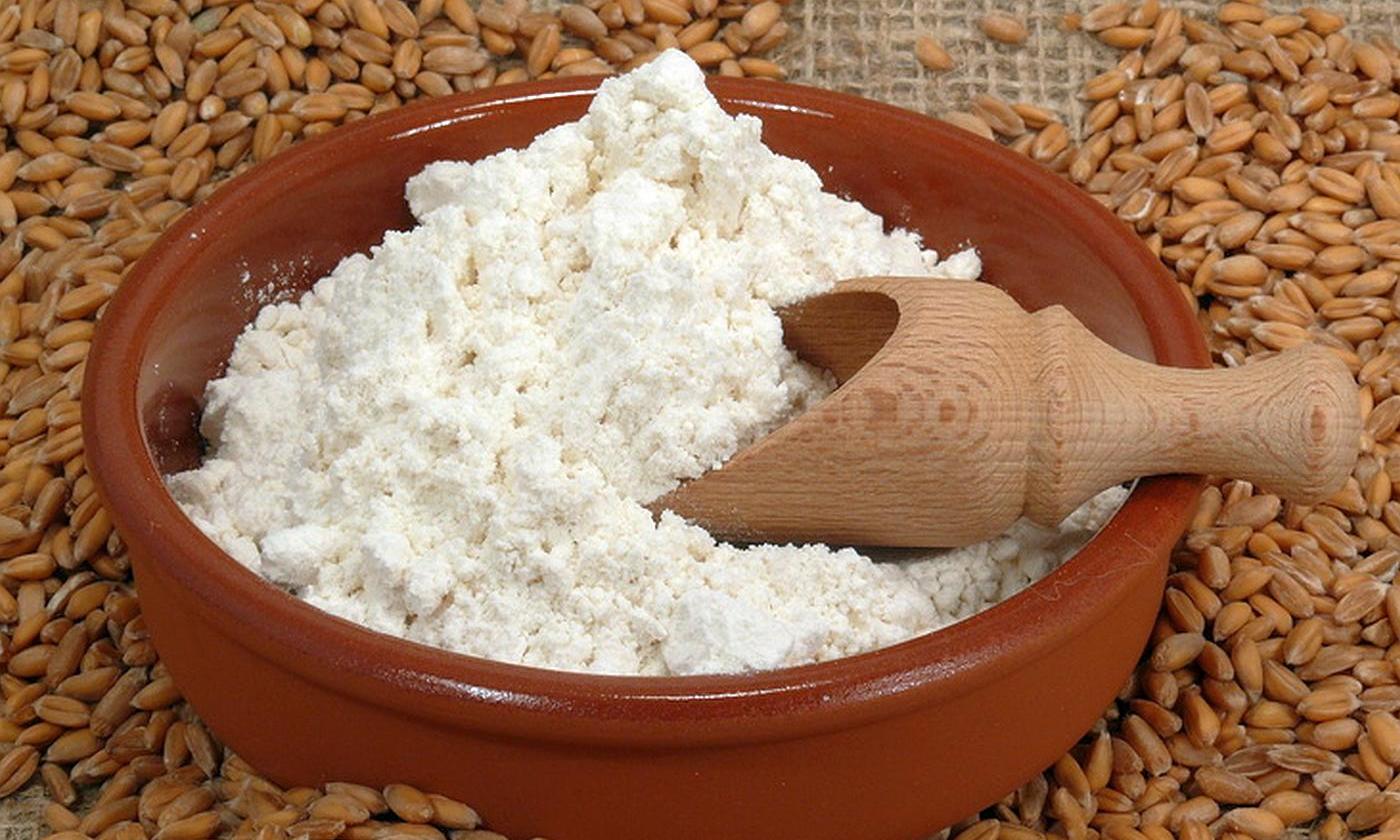
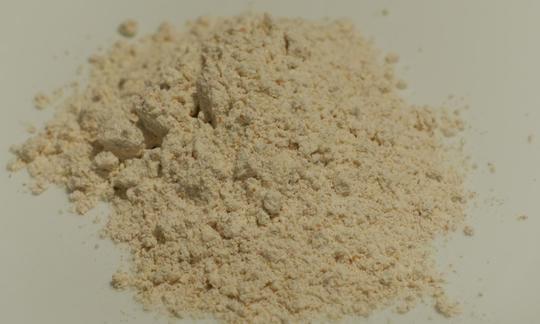

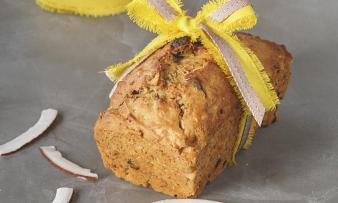
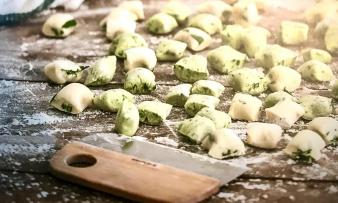
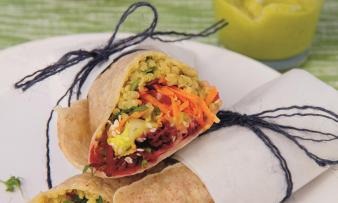





Comments